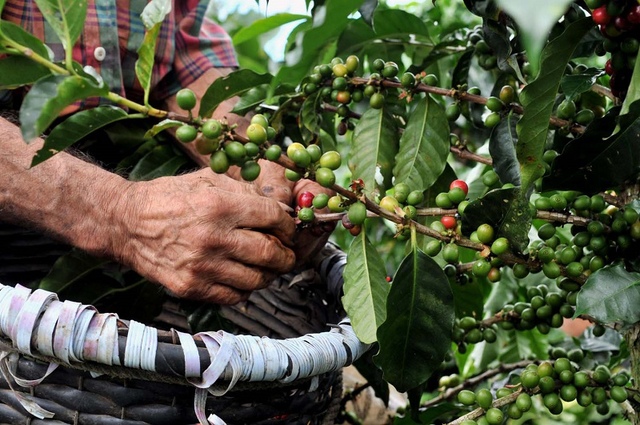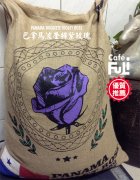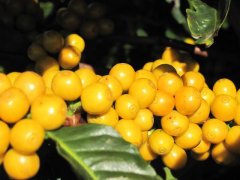Introduction to the cultivation of Finca La Perla Coffee in El Quich é Sleeping Beauty Manor, Kiche Province, Guatemala

For professional baristas, please follow the coffee workshop (Wechat official account cafe_style)
Finca La Perla is located in western Guatemala, surrounded by steep green hills on the Ixil Triangle Highlands (Ixil is the commonly spoken Mayan language), a unique area famous for the beauty of its indigenous culture and landscape. As an independent manor, it is famous for its unique local culture and beautiful scenery. "La Perla" means Sleeping Woman in Mayan, which deepens our impression of her beauty.
La Perla coffee has been growing since 1940. Coffee grows between 1100 and 1800 meters above sea level and is grown in a soft soil with higher levels of clay and sand than limestone bases. The Arenas family pays great attention to detail at every stage of the coffee process. Beans are harvested by hand only when they are fully mature and then dried in humidity or in the sun or in a mechanical dryer according to the weather.
La Perla came to prominence when he won the presidential award in the 2006 Super Bowl, a sprawling farm with a land area of 3285 square kilometers and growing Karatula and bourbon-flavored coffee. Another 990 hectares are used as local forest reserves, a paradise for animals, birds and native plant species. The farm's rainy hills are also several natural springs, and its Ispuir and Suswan River basins provide enough water to irrigate the entire farm.
The climate in the area is hot and humid, with rainfall of 197 to 217 inches a year. These conditions also support a variety of other crops, including cardamom, macadamia nuts and grains. The land on the farm is scattered with small settlements, where there are 2500 to 3000 local Mayans. Most farms work on farms and prefer their own land, where they grow staple food and spend at home. About 500 workers have formed a solidarity association whose activities have helped to improve the living standards of the farm community.
The commitment of its staff allowed La Perla to continue production during the Civil War (around 1960-1996-the longest civil war in the history of the American continent), although the farm was located at the center of the conflict between Army guerrillas based in the surrounding mountains. During the armed conflict, thousands of civilians in the Guatemalan triangle were killed, tortured or missing as the Guatemalan military pursued a "charred" policy to destroy villages. [a United Nations-sponsored report published in 1999 estimated that the State was responsible for 93 per cent of human rights violations during the war and guerrillas accounted for 3 per cent. It is estimated that 83% of the victims were Mayans.]
At the end of the armed conflict, farms worked hard to reintegrate into the countries most affected by the violence: refugees fleeing to save their families. La Perla provided work, rebuilt entire villages and promoted health campaigns such as vaccination, leading to the repatriation of many people whose lives were affected by the conflict.
Variety
Caturra and Bourbon Kaddura, bourbon
Baking degree
Shallow baking
Treatment method
Washing treatment Washed and dried on patios
Flavor
Rose peach and sweet peach aromas, lively and bright acidity, obvious sense of fruit juice, thick and soft balance of BODY, good sweetness in finish
The country
Guatemala El Quichy é of Guatemala
Producing area
Chaj ú l (La Perla is 38km north-east of the town), Quiche province
Manor
Arenas Family
Altitude
1100m~1800m
Important Notice :
前街咖啡 FrontStreet Coffee has moved to new addredd:
FrontStreet Coffee Address: 315,Donghua East Road,GuangZhou
Tel:020 38364473
- Prev

Pokuit, Panama Boquete Purple Rose Violet Rose 40% Rosa 40% Geisha
For the exchange of professional baristas, please pay attention to the coffee workshop (official Wechat account cafe_style) Pokuit producing area (Boquete), cool at night without frost damage, dry and sunny during the day, deeply affected by the microclimate of the Pacific and Atlantic currents, with abundant rainfall during the growing period and a clear dry and wet rainy season; in addition, the lava in the volcanic zone is rich in minerals, and the fertile volcanic black is rich in nutrients.
- Next

Fazenda Rainha Huangbourne Yellow Bourbon, Queen's Manor, Mojiana, Brazil.
For the exchange of professional baristas, please follow the coffee workshop (Wechat official account cafe_style) Brazilian coffee introduces that Brazil traditionally distinguishes the origin of coffee by province: (Brazil has 21 states, 17 states produce coffee, but 5 of them produce the largest, accounting for 98% of Brazil's total output.) Brazil has a wide variety of coffee, just like other Arabica coffee.
Related
- Does Rose Summer choose Blue, Green or Red? Detailed explanation of Rose Summer Coffee plots and Classification in Panamanian Jade Manor
- What is the difference between the origin, producing area, processing plant, cooperative and manor of coffee beans?
- How fine does the espresso powder fit? how to grind the espresso?
- Sca coffee roasting degree color card coffee roasting degree 8 roasting color values what do you mean?
- The practice of lattes: how to make lattes at home
- Introduction to Indonesian Fine Coffee beans-- Java Coffee producing area of Indonesian Arabica Coffee
- How much will the flavor of light and medium roasted rose summer be expressed? What baking level is rose summer suitable for?
- Introduction to the characteristics of washing, sun-drying or wet-planing coffee commonly used in Mantenin, Indonesia
- Price characteristics of Arabica Coffee Bean Starbucks introduction to Manning Coffee Bean Taste producing area Variety Manor
- What is the authentic Yega flavor? What are the flavor characteristics of the really excellent Yejasuffi coffee beans?

